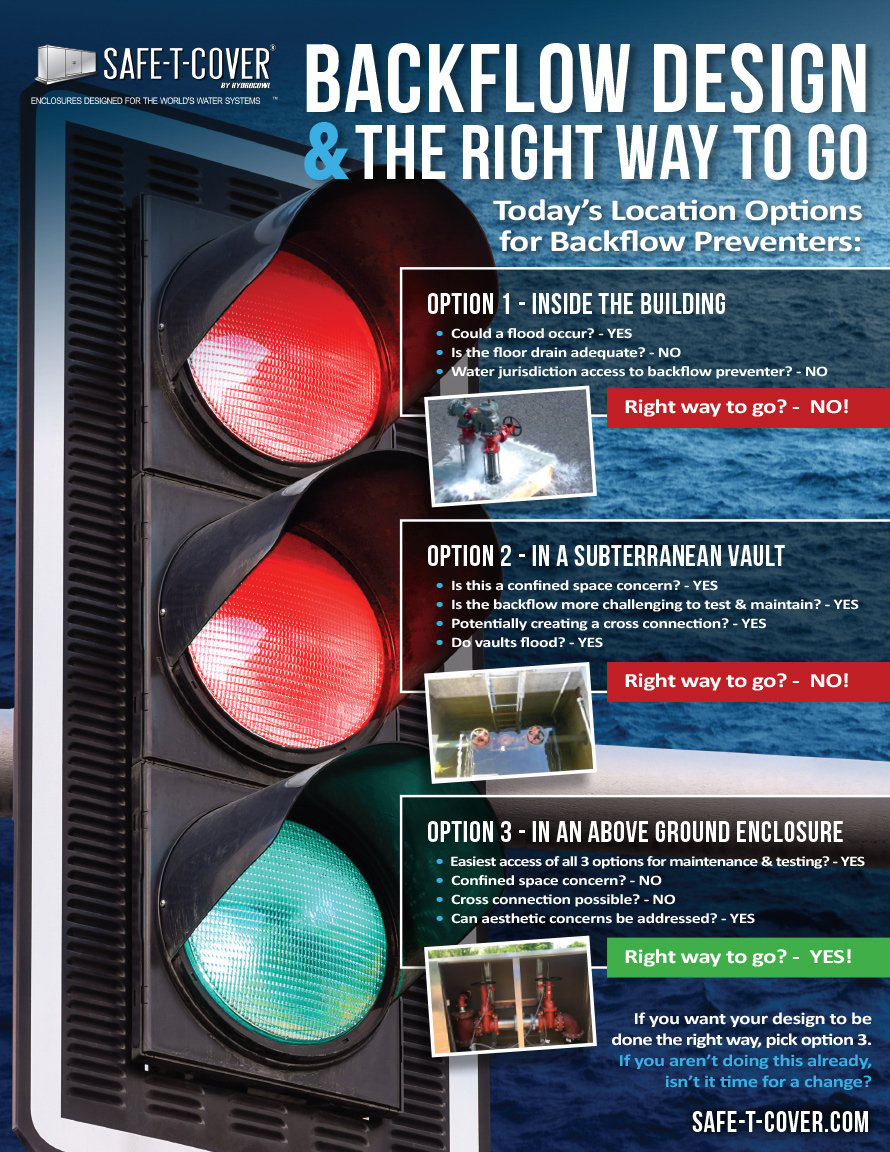If you're going to get something done, you want it done right — in all aspects of life, even backflow preventers.
Safe-T-Cover travels the country and routinely calls on design engineers to talk about backflow preventer designs and the best practices that are being used. What we’ve learned is that not enough people know how to do it the right way. The reason for this makes sense as the backflow preventer design is a small element in the overall design scope and what’s been done in the past seems to work.
We’re always writing blog articles on best practices for backflow preventer design, why installing a backflow inside a vault is not a good practice, and how indoor RPZ installations can lead to flooding and design risks.
We understand the notion of a red light and a green light as we think about driving the city streets. The red light tells us to stop, the yellow light cautions us, and the green light tells us to proceed. We believe the same notion applies to backflow preventer locations and have developed this infographic to drive the point home.
As a design engineer, we hope that you think about your next project with this infographic in mind. If we can help you choose the green-light design, reach out to us. We can discuss the options in greater detail and can help with the backflow preventer piping layout and backflow enclosure design. We are here to help.




